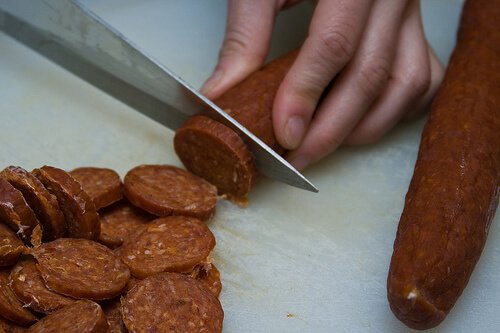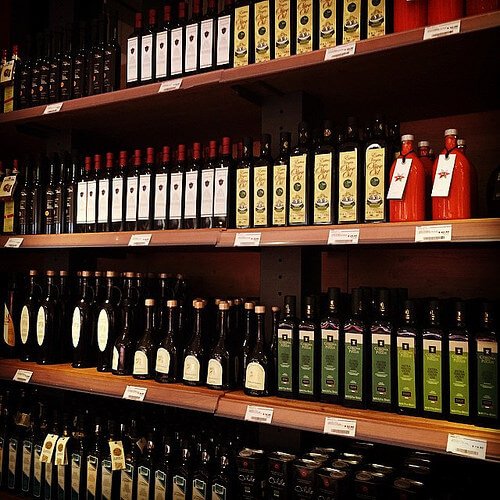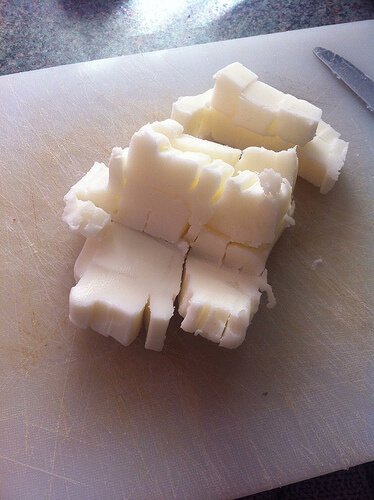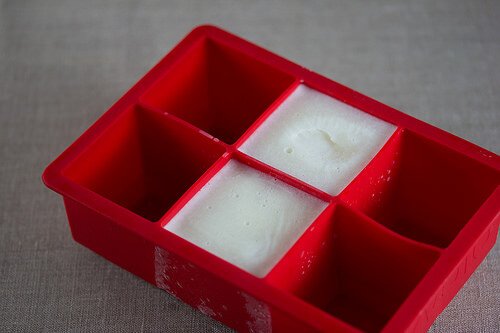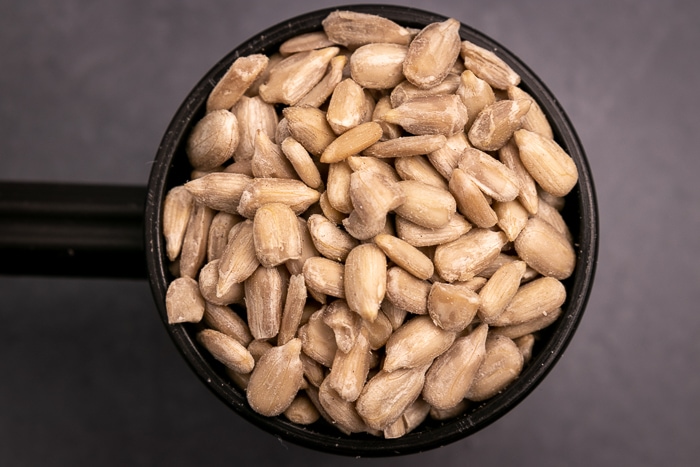Does Vegetable Oil Go Bad? How Long Does It Last?
Here’s everything you need to know about vegetable oil. Learn if it ever goes bad, how long it lasts, and how to tell if it’s rancid.
Got an out-of-date bottle of vegetable oil, and not sure if you can still use it? Does vegetable oil go bad?
Or maybe you read that you should discard your oil if it’s rancid, but you don’t quite know how to tell if that’s the case.
Sounds familiar?
If so, you’re in the right place. Read on.
Vegetable oil is a subtype of cooking oil, but most cooking oils are vegetable-based. Hence in many cases, those terms are used interchangeably. That’s what I do in this article, too. Nevertheless, be aware of this slight difference, and remember that not every cooking oil is vegetable oil.
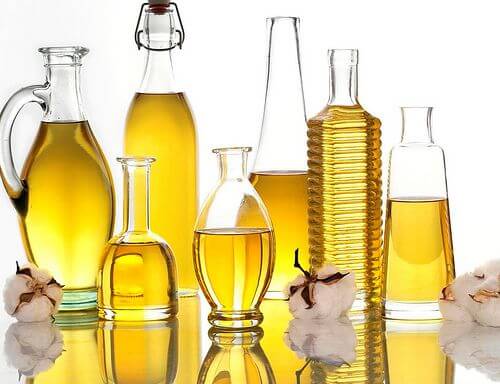
Does Vegetable Oil Go Bad?
Vegetable oil typically lasts for 12 to 18 months and definitely can go bad. Like other fat-based products, it’s slowly going rancid at all times, and at some point, it’s not good enough to use anymore.
Of course, the rancidification process speeds up once you open the bottle, and the way you store it affects its shelf life as well.
Unfortunately, like with other oils (e.g., coconut oil or avocado oil), it’s impossible to say exactly how long one will last. So instead, it’s much better to check if the oil is still okay instead of relying on dates.
Knowing that, let’s talk about how to tell if vegetable oil is bad.
Your vegetable oil might be simply canola under a different label. That means you don’t need to read another article to learn if canola oil goes bad. Other oils often labeled as vegetable oil or cooking oil include soybean oil, sunflower oil, and a few more.
Signs of Spoilage
Your vegetable oil is bad if it smells musty or its odor reminds you of old paint or nail polish remover. You should also toss it if it tastes sharp or sour, or it there’s any mold around the seal and cap.
Discard your vegetable oil if:
- It smells off. The oil is rancid if it gives off an aroma that reminds you of old paint or some chemicals. Same if the smell is harsh or strong or seems off in any other way. Vegetable oils typically smell pretty neutral, so that they work well in all kinds of cooked and based dishes.
- There’s mold or any other microbial growth in the bottle or on the cap. Mold isn’t a usual sign of spoilage, but get rid of the oil if you notice any.
- Anything else looks off. I’m sure you know how vegetable oil looks like. If there’s something wrong with yours, assume it’s spoiled. However, crystallization or cloudiness isn’t a sign of spoilage. They’re normal if you store the oil at a relatively cold temperature, and you can reverse this effect by loosening the cap and placing the bottle in a warmer spot.
- It tastes bad. If the oil looks and smells okay, giving it a taste is the last test. If it’s sour, soapy, or the taste is harsh, instead of the usual neutral flavor, it’s most likely rancid and no good.
(Oils like canola, sunflower, or even olive oil show the same signs of spoilage, in case you were wondering.)
Now, if anything else about the oil feels off, no matter if it’s a brand new bottle or one that’s been in storage for months, get rid of it. Better safe than sorry.
Next, let’s briefly touch on how you can tell if your cooking oil is rancid.
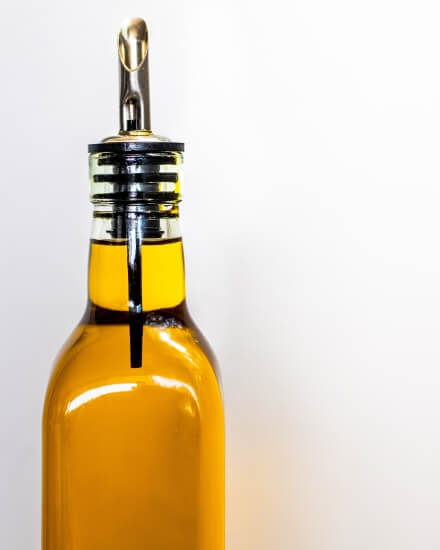
How to Tell if Vegetable Oil is Rancid?
Rancid vegetable oil smells or tastes bad. Different people describe the sensations differently, but some of the most commonly used terms include:
- paint-like, sour, generally bad, detergent-like smell
- sour, sharp, soap-like taste
If either reminds you of how you’d describe your cooking oil, chances are it’s rancid.
Remember that using rancid oil most likely won’t cause any harm immediately (think stomachache or getting sick) but has some potential long-term consequences. Throw it out.
Want more details? Here’s my article on how to tell if your oil is rancid.
Does Vegetable Oil Go Bad After Use?
Frying vegetable oil doesn’t make it go bad, but using the same oil over and over probably isn’t a good idea.
The thing is, the rancidification process speeds up when oil is exposed to oxygen, light, and heat. And when you use it in cooking, it’s at the very least exposed to lots of heat and can readily absorb oxygen.
That means a 30-minute cooking session possibly has a similar effect on the oil as a couple of months of storage, if not more.
(I don’t have any data to back that up, but the logic makes sense.)
Plus, vegetable oils are high in polyunsaturated fats, which aren’t as stable as saturated fats. Because of that, lard is a better candidate for reusing than vegetable oil.
That said, if you want to reuse your cooking oil, consider the following:
- Try to use it for cooking similar food, or even the same thing (e.g., french fries). The oil picks up the flavor of the food, and because of that, using it to fry fish makes it pretty much useless for any other use.
- Think about how “dirty” is what you’re cooking. The quality of the oil after cooking will be way better if it was pancakes than if it was coated meat.
- Using the oil shortens its shelf life significantly.
- Don’t mix fresh oil with one that’s already used.
Last but not least, limit the number of times you use the same oil to like 2 or 3. Using the same one over and over isn’t healthy.

How Long Does Vegetable Oil Last?
| Pantry | |
|---|---|
| Vegetable oil (unopened) | Best by + 3 – 6 months |
| Vegetable oil (opened) | 6 – 12 months |
Vegetable oil comes with a shelf life of 12 to 18 months and usually retains quality for at least a couple of months after the printed date. After opening, it keeps for at least 4 to 6 months, maybe even a year, depending on how you store it.
Of course, different sources have different suggestions, and the recommendations for open cooking oil range from 3 to 5 months to simply going with the best-by date, no matter when you open the bottle.
As usual, you can also consider refrigerating your vegetable oil after opening to prolong that storage period by a bit.
Now, you might be wondering how long past the printed date you can still use the oil. Unfortunately, there isn’t an exact answer to that question.
Expired Vegetable Oil
Vegetable oil doesn’t really expire, but its quality degrades over time. And at some point, you’ll notice the telltale signs of rancidity taking over and decide to discard the product.
That’s because the best-by date printed on the label is only a rough estimate of how long the oil could retain quality. And often, it’s weeks or even months past that date, especially if you store it properly (more on that later).
Obviously, it also depends on how sensitive you are to off-flavors. If you notice slight flavor changes easily, you will find the oil somewhat smelly and bad much sooner than if you’re not.
Overall, there’s no way to tell how long your cooking oil will keep past its date. It might be months, but it might as well start giving off hints of rancidity well before the best-by date.
Related: Does Crisco Go Bad?
Now, it’s time to tackle the last piece of the puzzle – storage.
How to Store Vegetable Oil
You can store vegetable oil in the pantry or in the fridge, depending on your preferences. What’s more important is that you keep it in a cool and dry place, away from any heat sources (e.g., the stove), and sealed tightly.
If you want to store the oil in the fridge, remember that it might crystalize and become cloudy, and it needs some warming up to become clear again.
While the crystallization doesn’t affect the flavor of the oil, it might promote oxidation reactions. In plain English, it means that the oil could go rancid faster.
One solution is storing the whole oil bottle in the fridge and having a smaller bottle that you refill in a cupboard in the kitchen. It’s a bit of a hassle, though, and for most of us, letting the oil sit in the cabinet in the kitchen is fine.
Rotten Records: Share Your Snap!
Caught some food past its prime? Upload your photo to “Rotten Records” and help others spot the signs of spoilage. Every image makes our food community safer and more informed!

